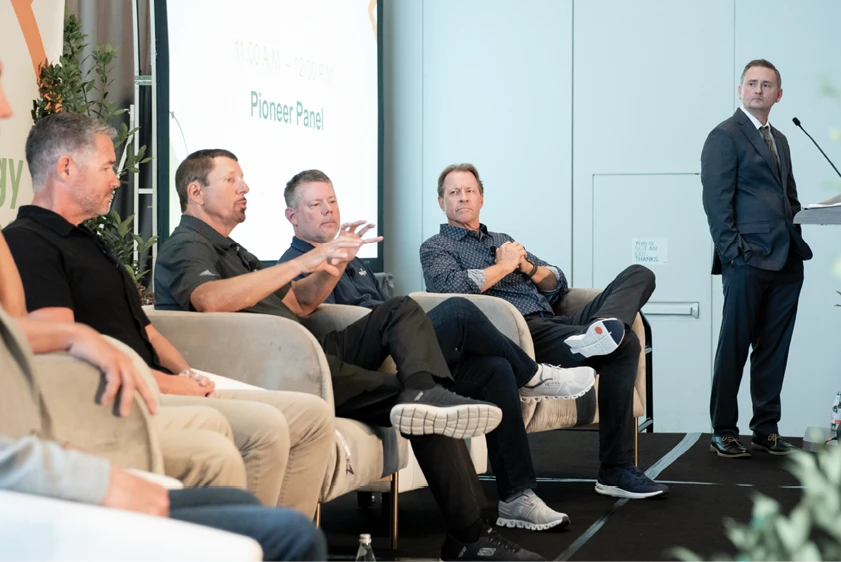For the past 20 years, our family-owned company has applied for more than 40 workers to travel from Tamaulipas, Mexico, to St. Louis on temporary nine-month work visas to perform lawn care and landscaping services for our clients.
Over the winter, we jump through a few government hoops, pay a bunch of fees, send out renewals to our clients and plow for a few snow events.

When springtime comes, the Mexican employees arrive and it’s off to the races. They require minimal quality oversight because the same men have been coming each year and know our properties and training. We throw a goodbye party in November to say thank you and then the cycle repeats itself.
For 20 years, this process has repeated and our company has experienced huge successes serving nearly 1,000 clients.
That was the case until 2015.
- 2015 was the year that our help didn't arrive until early fall.
- 2015 was the year that eight days before lawn mowing began, we found out they weren’t coming.
- 2015 was the year that the cap was reached before we received our approval.
- 2015 was the year we told our clients we were having a labor crisis.
But 2015 was also the year that we changed our mindset. I realized last year that our small Dowco team is stronger and has more will power to succeed than the United States government. I know that because here are the facts:
- We subcontracted out $500,000 worth of grass cutting and still ended the year with more than 55 percent gross profit margin.
- We put the brakes on sales and declined all new work during April and May (the biggest selling opportunity in the industry) and still exceeded our revenue from the prior year.
- Every single person on our management team is still employed with us today.
- All of our top clients renewed their contracts.
Tips for survival.
The first way to survive a crisis like this is to change your mindset. Remove yourself from all negative conversations relating to H-2B problems.
Avoid naysayers who tell you that a seasonal business like yours will never be able to find reliable workers who do a good job. Stop following people who tell you that the new generation of American workers is lazy and won’t show up to mow grass in the heat of the summer.
Stop following people who tell you that the new generation of American workers is lazy and won’t show up to mow grass in the heat of the summer.
Instead, think critically, proactively and long term. Surround yourself with positive people and read books or articles that can help you right now. Focus on your personal development and growth, and on creating a place Americans want to work.
Relying on the government for such a vital piece of your business – the labor – is a kiss of death.
If you want to build a scalable business model, start changing the way you view your employee hiring, training and retention processes now.
As a turf care professional, you’ve learned that the best defense is a great offense. Apply the same strategy to your business world and entrepreneurial journey. Stay in control of your destiny and don’t give Uncle Sam the power to control the fate of your company.
To be completely transparent, Dowco hasn’t stopped using the H-2B program completely. But we have reduced our dependency on it. We went from applying for almost 50 temporary work visas to applying for only 16 (and we have 13 employed this year).
We are continually pushing our hiring, training and employee retention strategies to the limit. We created Dowco Academy, which has been a big success so far in the beta testing phase. I’m happy to teach anyone who is interested about some of the techniques we used if you send me an email, but I truly believe a mindset shift has to occur first. Start putting your trust and confidence into things that are in your control. Reduce your dependency on H-2B.
Ask the experts: New and used equipment
Q: I run a landscape construction company and my primary service focus is performing grade work and installing yards for new residential construction. I am looking for guidance on purchasing new or used equipment, specifically a skid-steer track loader that will serve as my primary site preparation equipment day in and day out.
A: In discussing his situation, the company owner reported finding used machines for sale with about 1,000 hours priced at approximately 65 percent of the price of a new machine. The market he operates in is very active with new residential construction, so used machines are currently selling at a premium price. The useful life of a track loader for his type of usage is about eight years, although proper service and maintenance procedures can add to that life expectancy.

We talked about used machines that had previously operated in rental fleets and he decided against purchasing a machine that had been rented most of its life. He felt that with his growing business, he would rely heavily on this machine, so this purchase was very important to him. He also knows that he won’t have a loaner available if his machine breaks down. Taking all of this into consideration and following best maintenance practices and care, we determined that his best option would be to consider a new machine purchase.
We discussed the asset value of the new machine, its extended warranty and the fact that new machines can generally produce more work versus used machines. Purchasing a new machine offered other financial benefits, particularly increased depreciation and no downtime.
Ultimately, the owner found a new loader that met all his needs and he made the purchase. He expects the new machine will immediately become the workhorse in his fleet and will allow him to grow his business without concern for equipment failures or downtime for many years to come.
He also wondered about the trade-in-value as eventually he’ll consider buying another track loader. Equipment trade-in values are more difficult to predict because of changing market conditions. Currently, used machines are commanding a higher trade-in value in his area. However, this can change over time as market conditions change.
In summary, the owner is committed to a maintenance schedule that will keep his machines running at peak performance and producing income. He is confident that he made the right decision on his purchase considering his financial operating system and how using newer equipment can reduce repair expenses that decrease net profits.
I expect this contractor member to grow his business and increase profitability.
Many contractors find that they can use the savings from reduced repair expense to finance new equipment and they can concentrate on performing more landscape work and less shop and repair activity. Using this owner’s case in point can help determine future equipment purchasing decisions.
Rick Cuddihe, landscape industry certified chair, NALP Safety & Risk Management Committee NALP Trailblazer Lafayette Property Maintenance
Ask the Experts is brought to you in partnership with NALP, the national association of landscape professionals. Questions are fielded through NALP’s Trailblazers, the industry’s leading company mentoring program. For more questions visit Landscapeprofessionals.org.

Explore the June 2016 Issue
Check out more from this issue and find your next story to read.




